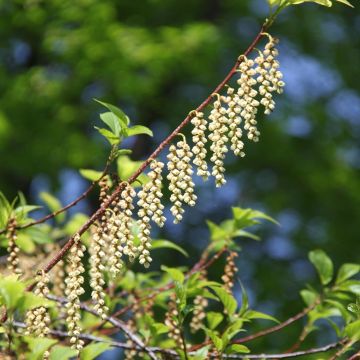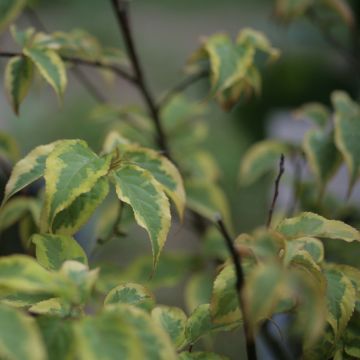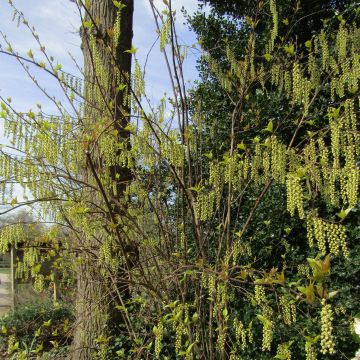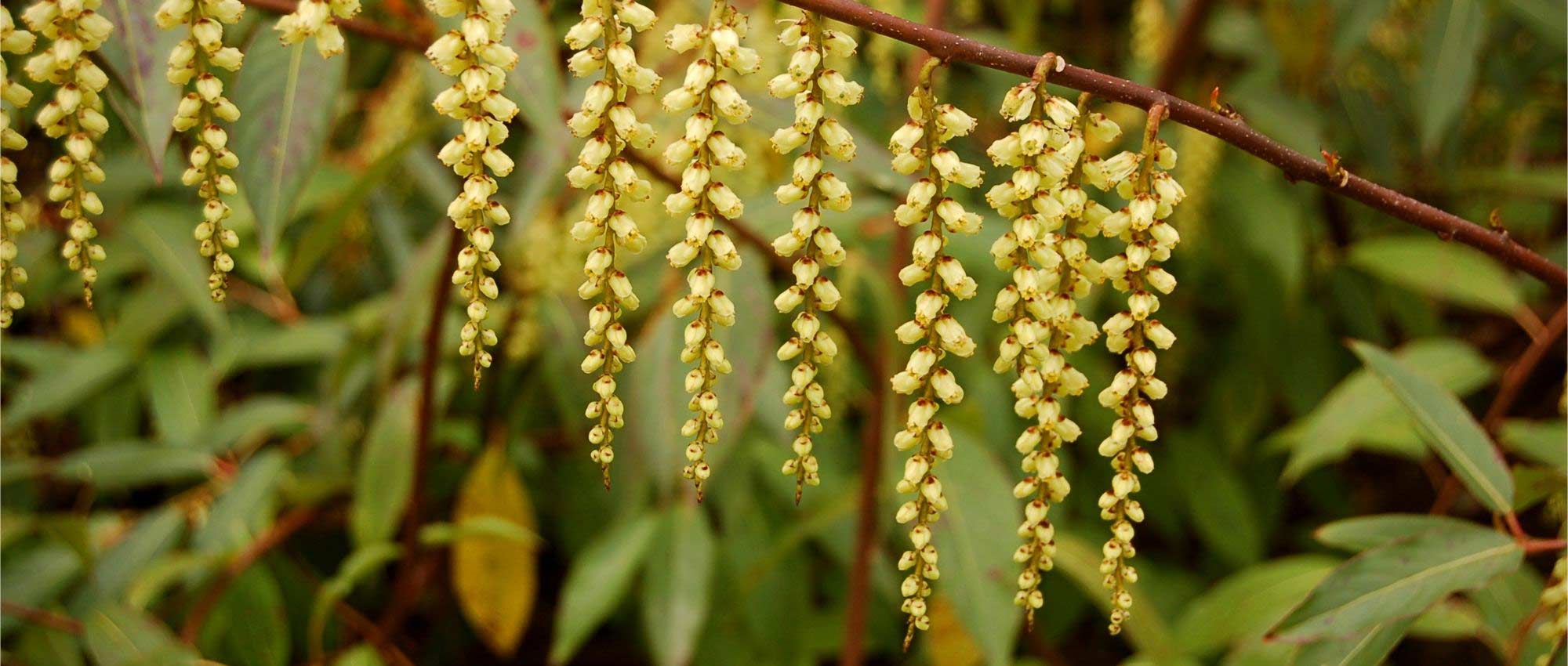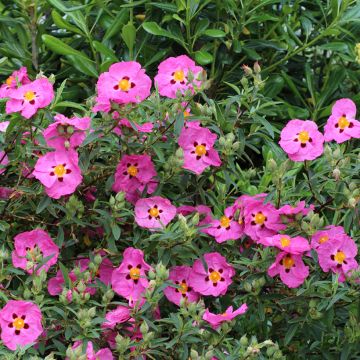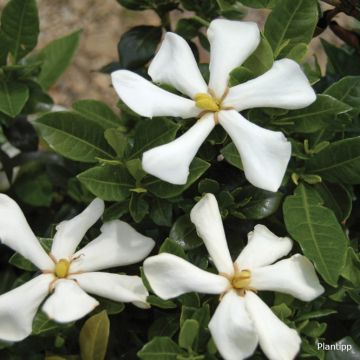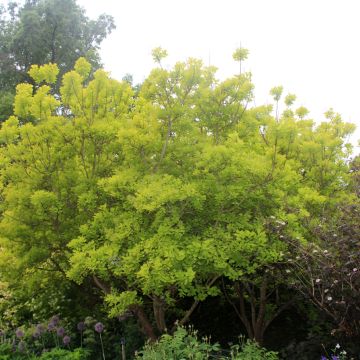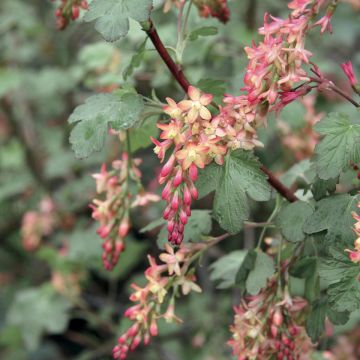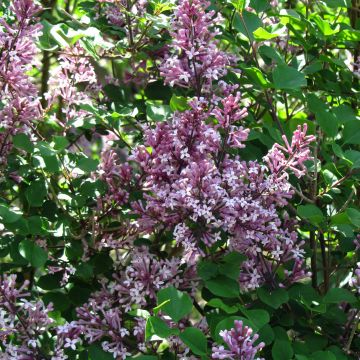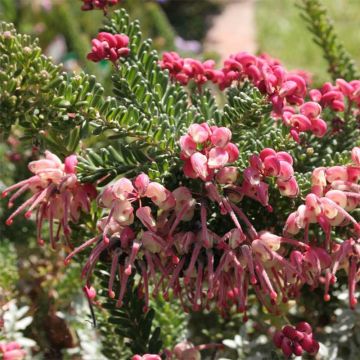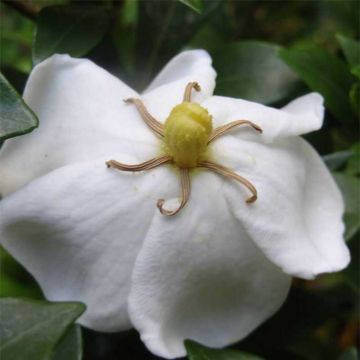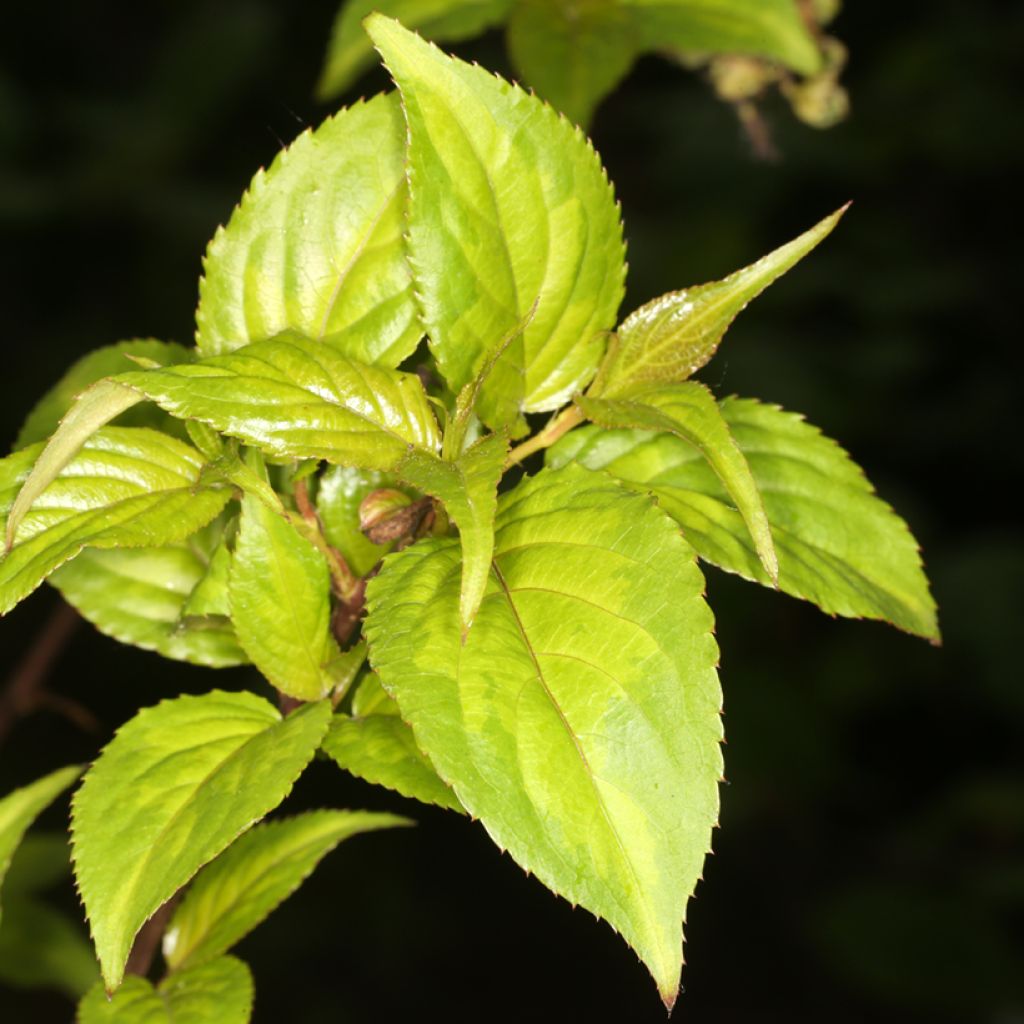

Stachyurus chinensis Wonderful Image - Chinese Stachyurus


Stachyurus chinensis Wonderful Image - Chinese Stachyurus
Stachyurus chinensis Wonderful Image - Chinese Stachyurus
Stachyurus chinensis Wonderful Image
Chinese Stachyurus, Chinese Stachyurus 'Celina', Chinese Stachyurus 'Joy Forever'
Special offer!
Receive a €20 voucher for any order over €90 (excluding delivery costs, credit notes, and plastic-free options)!
1- Add your favorite plants to your cart.
2- Once you have reached €90, confirm your order (you can even choose the delivery date!).
3- As soon as your order is shipped, you will receive an email containing your voucher code, valid for 3 months (90 days).
Your voucher is unique and can only be used once, for any order with a minimum value of €20, excluding delivery costs.
Can be combined with other current offers, non-divisible and non-refundable.
Why not try an alternative variety in stock?
View all →This plant carries a 24 months recovery warranty
More information
We guarantee the quality of our plants for a full growing cycle, and will replace at our expense any plant that fails to recover under normal climatic and planting conditions.
Would this plant suit my garden?
Set up your Plantfit profile →
Description
Stachyurus chinensis 'Wonderful Image' is a variety of Chinese Stachyurus, selected for its slightly variegated foliage that takes on beautiful autumn colours. It is a deciduous bush with a flexible habit, also valued for its early flowering in clusters of pale yellow pendulous flowers, which are very decorative. It is cultivated somewhat like a camellia or magnolia, in a humus-bearing, non-limestone soil that remains moist in summer. Plant it in partial shade, sheltered from cold winds to protect its early flowering.
Stachyurus chinensis 'Wonderful Image' is a horticultural selection. The species is a sarmentous, semi-climbing, deciduous bush native to China, belonging to the Stachyuraceae family. This plant thrives in light, moist soils that are rich in humus and neutral to acidic. Although it can withstand -15°C at its lowest, its flowering is sensitive to late frosts and dry, cold winds. The cultivar 'Wonderful Image' differs from the typical species with its delicately variegated foliage that is yellow in spring. Its habit is arching and spreading, supported by long, flexible stems of mahogany colour. The bush reaches approximately 1.5 m in all directions in a few years, sometimes 2 m if conditions are optimal. Its flowering takes place between February and March, on bare branches, before the foliage appears. Its flowers are small cream-yellow bell-shaped blooms grouped in slender pendulous clusters measuring 8 to 12 cm. The leaves are green in summer, barely edged with purple. In autumn, they take on a reddish wine colour, while their edges turn pink. The foliage of this Stachyurus is composed of ovate to oblong, glossy leaves, as thin as paper, with toothed edges.
Stachyurus chinensis 'Wonderful Image' can be used both in mass plantings and as a standalone specimen. Plant it in front of a screen of Fargesia bamboos, boxwood, or conifers to highlight its flower clusters and autumn foliage. You can plant it next to Witch Hazel, Itea, Pieris, Clethra, Anemone tree which appreciate the same growing conditions. This bush is also suitable for light woodland areas and Japanese gardens. At its base, plant some daffodils, wood hyacinths, or snowdrops.
Stachyurus chinensis Wonderful Image - Chinese Stachyurus in pictures
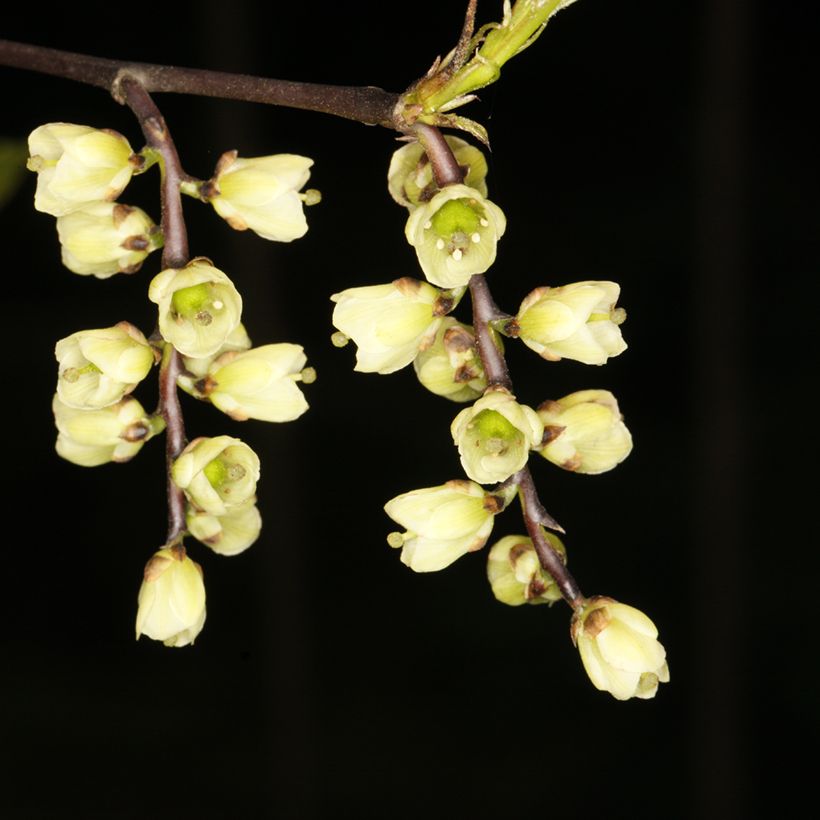

Plant habit
Flowering
Foliage
Botanical data
Stachyurus
chinensis
Wonderful Image
Stachyuraceae
Chinese Stachyurus, Chinese Stachyurus 'Celina', Chinese Stachyurus 'Joy Forever'
Stachyurus praecox Wonderful Image
Cultivar or hybrid
Other Stachyurus
View all →Planting and care
Plant Stachyurus chinensis 'Wonderful Image' in a sheltered location away from cold winds to protect its flower buds, which form as early as summer. Choose a sunny, non-scorching exposure or partial shade. It does not tolerate limestone, drought, or excessively clayey soils. This bush is grown in a mixture of ericaceous soil, potting soil, and well-rotted compost, which remains moist in summer. If necessary, in very heavy soil, add a little sand and non-limestone gravel to the mix for effective drainage. It can be planted in full sun or partial shade. In dense shade, it will grow but flower less easily.
Prune in spring after flowering. Lighten the structure of the bush by removing branches that cross in the centre and getting rid of dead branches. Be careful with excessive pruning, as it will unbalance its elegant shape.
Planting period
Intended location
Care
Planting & care advice
This item has not been reviewed yet - be the first to leave a review about it.
Similar products
Haven't found what you were looking for?
Hardiness is the lowest winter temperature a plant can endure without suffering serious damage or even dying. However, hardiness is affected by location (a sheltered area, such as a patio), protection (winter cover) and soil type (hardiness is improved by well-drained soil).

Photo Sharing Terms & Conditions
In order to encourage gardeners to interact and share their experiences, Promesse de fleurs offers various media enabling content to be uploaded onto its Site - in particular via the ‘Photo sharing’ module.
The User agrees to refrain from:
- Posting any content that is illegal, prejudicial, insulting, racist, inciteful to hatred, revisionist, contrary to public decency, that infringes on privacy or on the privacy rights of third parties, in particular the publicity rights of persons and goods, intellectual property rights, or the right to privacy.
- Submitting content on behalf of a third party;
- Impersonate the identity of a third party and/or publish any personal information about a third party;
In general, the User undertakes to refrain from any unethical behaviour.
All Content (in particular text, comments, files, images, photos, videos, creative works, etc.), which may be subject to property or intellectual property rights, image or other private rights, shall remain the property of the User, subject to the limited rights granted by the terms of the licence granted by Promesse de fleurs as stated below. Users are at liberty to publish or not to publish such Content on the Site, notably via the ‘Photo Sharing’ facility, and accept that this Content shall be made public and freely accessible, notably on the Internet.
Users further acknowledge, undertake to have ,and guarantee that they hold all necessary rights and permissions to publish such material on the Site, in particular with regard to the legislation in force pertaining to any privacy, property, intellectual property, image, or contractual rights, or rights of any other nature. By publishing such Content on the Site, Users acknowledge accepting full liability as publishers of the Content within the meaning of the law, and grant Promesse de fleurs, free of charge, an inclusive, worldwide licence for the said Content for the entire duration of its publication, including all reproduction, representation, up/downloading, displaying, performing, transmission, and storage rights.
Users also grant permission for their name to be linked to the Content and accept that this link may not always be made available.
By engaging in posting material, Users consent to their Content becoming automatically accessible on the Internet, in particular on other sites and/or blogs and/or web pages of the Promesse de fleurs site, including in particular social pages and the Promesse de fleurs catalogue.
Users may secure the removal of entrusted content free of charge by issuing a simple request via our contact form.
The flowering period indicated on our website applies to countries and regions located in USDA zone 8 (France, the United Kingdom, Ireland, the Netherlands, etc.)
It will vary according to where you live:
- In zones 9 to 10 (Italy, Spain, Greece, etc.), flowering will occur about 2 to 4 weeks earlier.
- In zones 6 to 7 (Germany, Poland, Slovenia, and lower mountainous regions), flowering will be delayed by 2 to 3 weeks.
- In zone 5 (Central Europe, Scandinavia), blooming will be delayed by 3 to 5 weeks.
In temperate climates, pruning of spring-flowering shrubs (forsythia, spireas, etc.) should be done just after flowering.
Pruning of summer-flowering shrubs (Indian Lilac, Perovskia, etc.) can be done in winter or spring.
In cold regions as well as with frost-sensitive plants, avoid pruning too early when severe frosts may still occur.
The planting period indicated on our website applies to countries and regions located in USDA zone 8 (France, United Kingdom, Ireland, Netherlands).
It will vary according to where you live:
- In Mediterranean zones (Marseille, Madrid, Milan, etc.), autumn and winter are the best planting periods.
- In continental zones (Strasbourg, Munich, Vienna, etc.), delay planting by 2 to 3 weeks in spring and bring it forward by 2 to 4 weeks in autumn.
- In mountainous regions (the Alps, Pyrenees, Carpathians, etc.), it is best to plant in late spring (May-June) or late summer (August-September).
The harvesting period indicated on our website applies to countries and regions in USDA zone 8 (France, England, Ireland, the Netherlands).
In colder areas (Scandinavia, Poland, Austria...) fruit and vegetable harvests are likely to be delayed by 3-4 weeks.
In warmer areas (Italy, Spain, Greece, etc.), harvesting will probably take place earlier, depending on weather conditions.
The sowing periods indicated on our website apply to countries and regions within USDA Zone 8 (France, UK, Ireland, Netherlands).
In colder areas (Scandinavia, Poland, Austria...), delay any outdoor sowing by 3-4 weeks, or sow under glass.
In warmer climes (Italy, Spain, Greece, etc.), bring outdoor sowing forward by a few weeks.






























